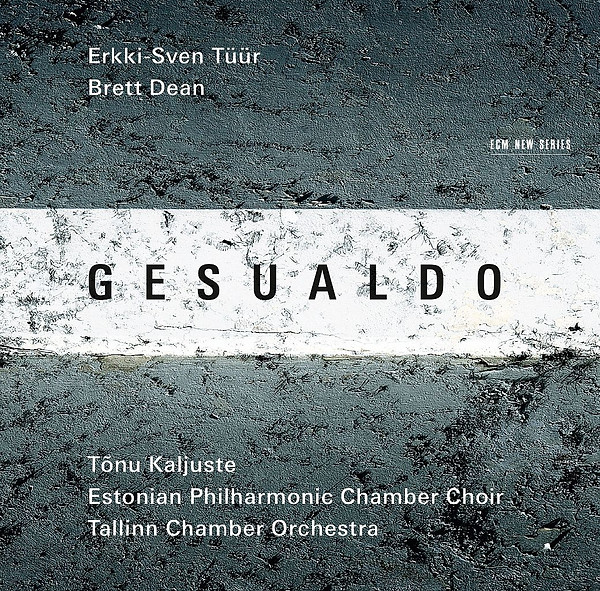
Tõnu Kaljuste Conductor
Tõnu Kaljuste Conductor


Release date: 18.09.2015
ECM 2452
1
MORO LASSO(Carlo Gesualdo)
04:33
2
CARLO(Brett Dean)
20:37
3
O CRUX BENEDICTA(Carlo Gesualdo)
04:14
4
L’OMBRA DELLA CROCE(Erkki-Sven Tüür)
06:57
5
PSALMODY(Erkki-Sven Tüür)
22:09
If you’re casting around for musical inspiration, you could do a lot worse than Carlo Gesualdo. A 16th-century prince and a composer, he is best remembered as a double-murderer – infamously stabbing his wife and her lover after discovering them in flagrante. It was the grief and penitence which followed that fuelled the composer’s extraordinarily chromatic vocal writing – convulsions of disjunct melody and harmonic lurches that find no equal for several centuries.
Thoughtfully programmed, in characteristic ECM style, this disc from Tõnu Kaljuste, the Tallinn Chamber Orchestra and the Estonian Philharmonic Chamber Choir takes Gesualdo’s motets and madrigals as a starting point, pairing Kaljuste’s own arrangements of ‘Moro lasso’ and ‘O crux benedicta’ for string orchestra with Brett Dean’s Carlo (1997) – a tone-poem for chamber orchestra, reimagining both Gesualdo’s music and the ‘fateful night’ of the murders – and two works by Erkki-Sven Tüür.
Both Kaljuste’s orchestra and his instinct are good ones; the insistent suspensions of Gesualdo’s vocal writing – not so much sliding as grinding over one another – translate beautifully for strings, muted and thickly scored in close imitation of a viol consort. They offer a point of departure for the Dean, whose verbatim musical quotations of the start quickly dissolve into fragments of melody and sound, song giving way to whispers and breaths, counterpoint to a clattering Babel of unfinished musical thoughts.
Written especially for the album, Tüür’s L’ombra della croce is altogether more affirmative, borrowing its mood and opening motifs from Gesualdo’s motet ‘O crux benedicta’. Thick strings cushion Gesualdo’s sharper edges, a soft-focus approach to the past also found in Tüür’s Psalmody, an attractive, rhythmically charged neo-classical fantasy for strings and voices, but one which – at over 20 minutes – rather overstays its welcome, despite carefully shaped performances.
Booklet-notes are inexcusably minimal and fail to include any texts. One can only assume that Kaljuste’s project in musical archaeology is content simply to unearth. Interpretation and explication is left, bizarrely, to others.


